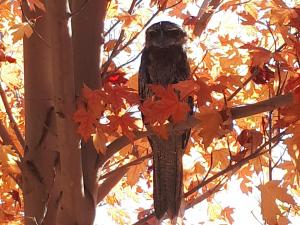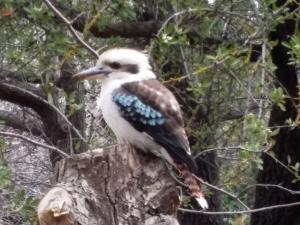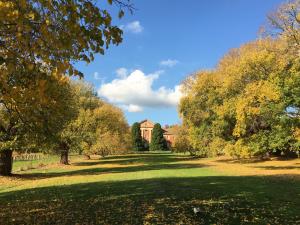Sculptures and Features
Special features at the Arboretum include a splendid avenue of 68 English elms (dated back to 1928), a watercourse with a palm and cycad walk and sculptures.
Specimens in the collection are arranged primarily into Australian and exotic sections and in taxonomic groupings within those areas.
At the entrance you'll find 10 imposing sugar gums planted by Peter Waite in 1877. These are followed by a fragrant avenue of lemon-scented gums which line either side of the driveway.
Every tree is labelled and mapped and the trees are well spaced to show their individual forms.
Sculptures can be found in both the Waite Arboretum and the Urrbrae House Gardens. Find out more about the sculptures and special features at the Precinct.
-
Birdlife
On any day of the year more than 50 trees in the Arboretum are flowering or fruiting, attracting nectar feeding birds and parrots. The watercourse, lake and floating island attract waterbirds and are frequented at different times by ducks, geese, cormorants, pelicans, grebes, egrets and herons. Mature eucalypts in the Arboretum provide nesting hollows which take many decades to develop.
The Waite Arboretum and Urrbrae House Gardens are designated butterfly conservation sites.
Birds of the Waite Arboretum, by Max Possingham -
Elm Avenue
A splendid avenue of 68 English elms was planted in 1928 to frame the vista from the new Waite Institute building to the sea. The avenue marks the passing seasons with a flush of bright green leaves in spring and yellow autumn colour. The Elm Avenue, a number of special collections, and the Arboretum as a whole are listed on the State Heritage and National Trust Register of Significant Trees.
-
The Labyrinth
Due to safety concerns, the Labyrinth has been removed from its current location and will be rebuilt in a more sustainable form as part of the Waite Gatehouse relocation project. In its new model, the Labyrinth will retain the shape and purpose of the original design, while taking on a central role as part of the new volunteer centre development.
-
Rare trees
-
Remnant vegetation
Grey box Eucalyptus microcarpa , red gum E. camaldulensis and blue gum E. leucoxylon occur naturally in this area and some trees pre-dating white settlement remain. Shrubs which are native to the site include Golden Wattle Acacia pycnantha, Sweet Bursaria Bursaria spinosa , Sticky Hop-bush Dodonaea viscosa , Native Apricot Pittosporum angustifolium and Native Lilac Hardenbergia violacea .
Previously sheep were used to keep the grass low. With the removal of grazing in 1991, the native understorey has regenerated. There are now fine strands of Wallaby-grass Rytidosperma species and Spear-grass Austrostipa species in the Arboretum as well as many other small native plants such as Climbing Saltbush Einadia nutans and Windmill-grass Chloris truncata. The Arboretum contains some valuable remnants of the original Adelaide Plains flora.
A dedicated group of volunteers are helping to conserve and restore the original understorey flora by the control of weeds and propagation of locally collected seed for replanting.
-
Watercourse
The development of the watercourse began in 1994 with the creation of meanders and a series of ponds and planting of native water plants. The dam was built by Peter Waite at the turn of the 20th century, but has since been enlarged and is now fed by a bore as well as by stormwater.
Sedges have proved to be most successful, with the purple loosestrife providing a splash of colour through the summer. A palm and cycad walk has been established along the verge of the watercourse with the assistance of the Palm & Cycad Society of SA.



